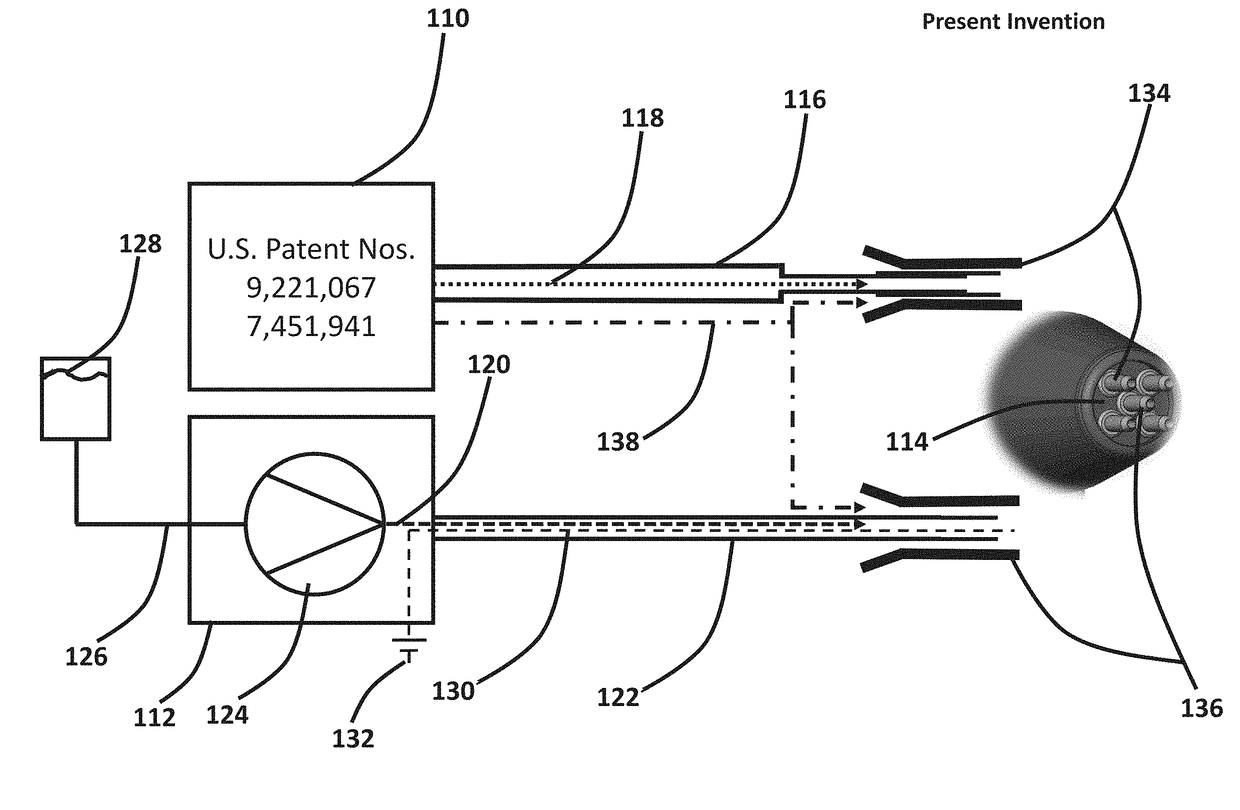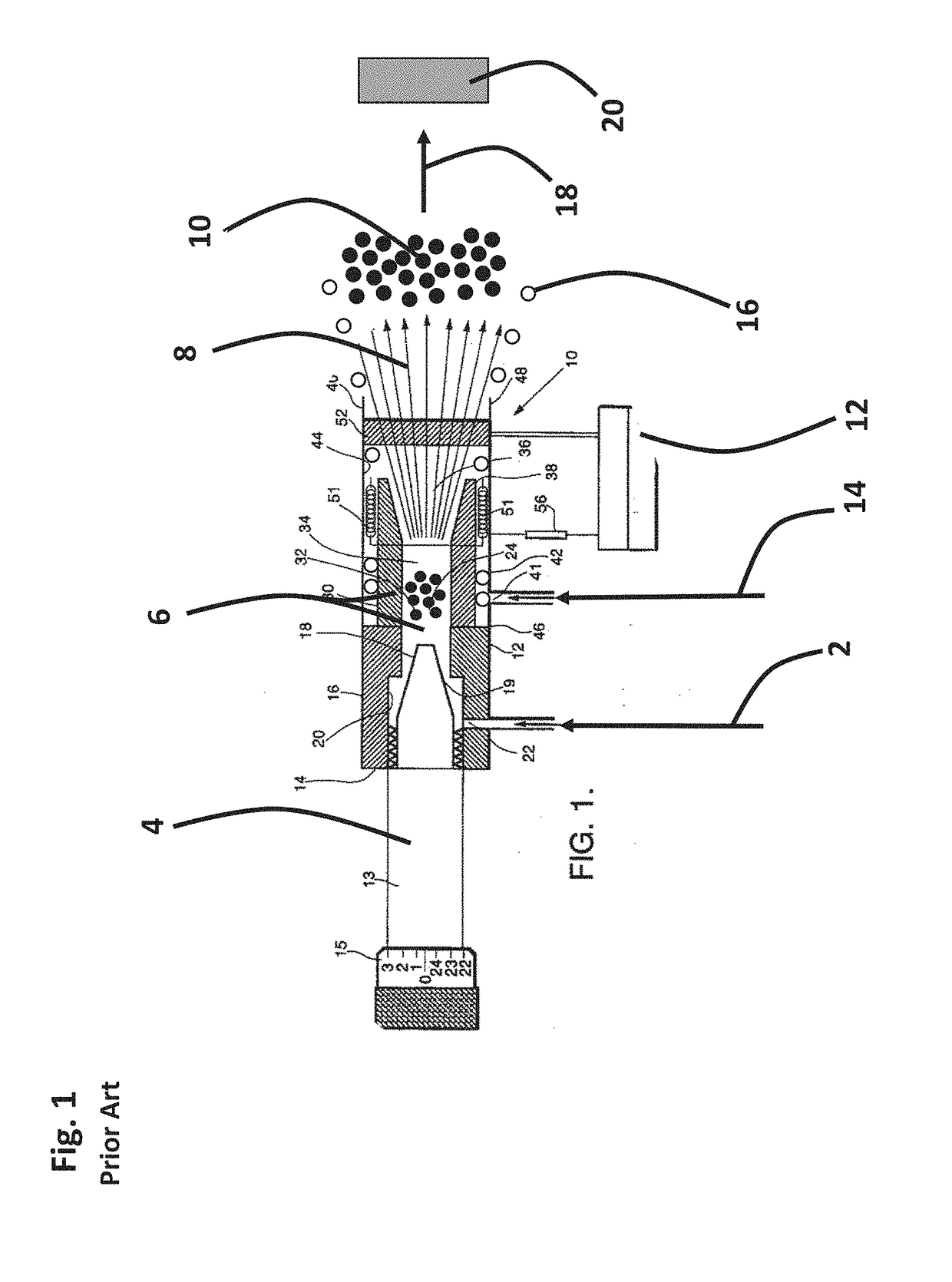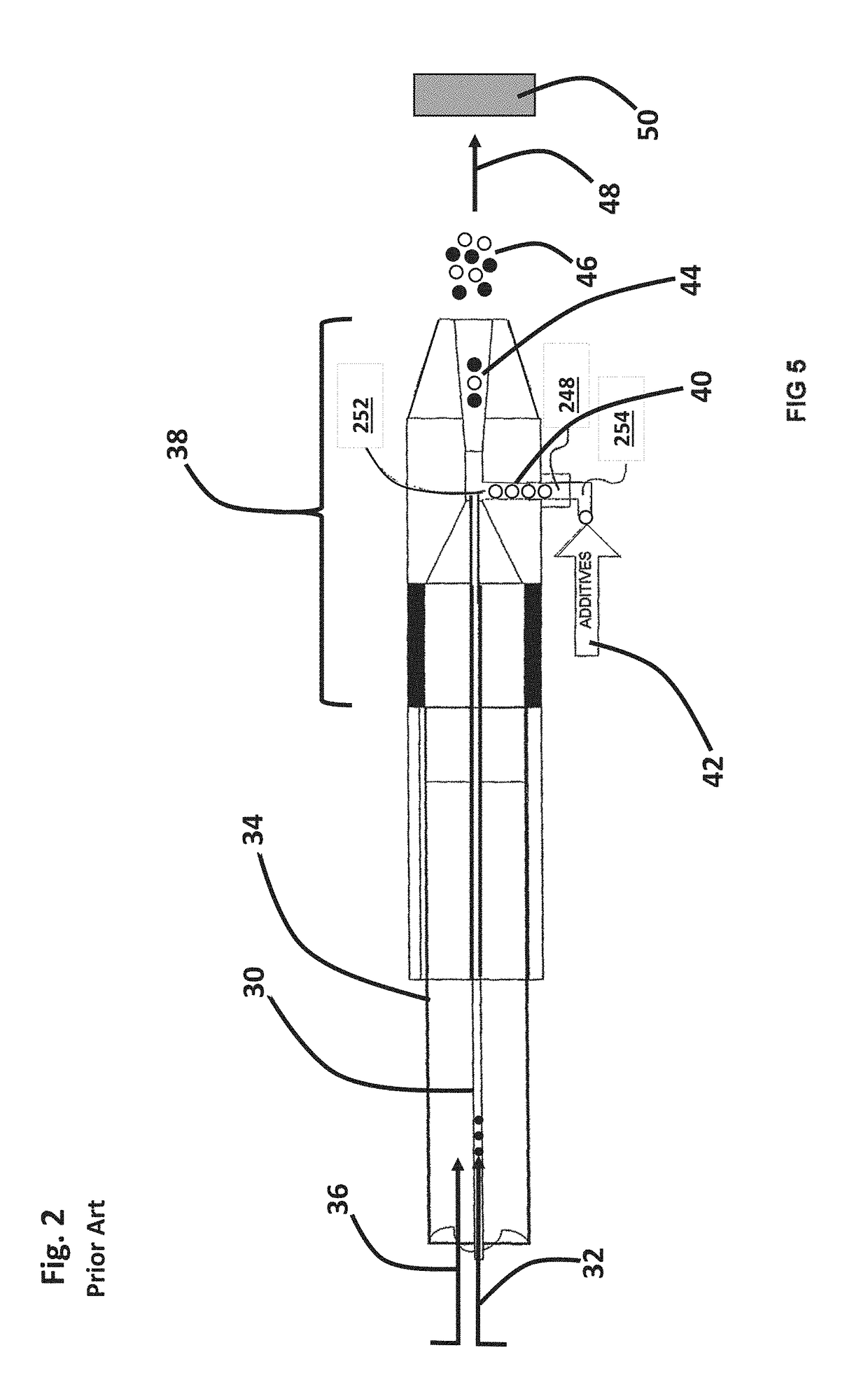Passive Electrostatic CO2 Composite Spray Applicator
a composite spray and electrostatic technology, applied in the direction of spray discharge apparatus, liquid supply arrangement, manufacturing tools, etc., can solve the problems of large portion of atomized spray missing the substrate, and wasting a portion of applied spray, etc., to achieve high melt point additive chemistries, improve spray process productivity, and reduce the effect of atomization
- Summary
- Abstract
- Description
- Claims
- Application Information
AI Technical Summary
Benefits of technology
Problems solved by technology
Method used
Image
Examples
Embodiment Construction
[0032]The present invention is an electrostatic spray application apparatus and method for producing an electrostatically charged and homogeneous CO2 composite spray mixture containing an additive and simultaneously projecting at a substrate surface. The CO2 composite spray mixture is formed in the space between CO2 and additive mixing nozzles and a substrate surface. The CO2 composite spray mixture is a composite fluid having a variably-controlled aerial and radial spray density comprising pressure- and temperature-regulated propellant gas (i.e., compressed air), CO2 particles, and additive particles. The invention comprises two or more circumferential and high velocity air streams containing passively charged CO2 particles which are positioned axis-symmetrically and coaxially about an inner and lower velocity injection air stream containing one or more additives to form a spray cluster. One or more spray clusters may be used to form a larger spray cluster configuration. The axis-s...
PUM
| Property | Measurement | Unit |
|---|---|---|
| length | aaaaa | aaaaa |
| length | aaaaa | aaaaa |
| pressure | aaaaa | aaaaa |
Abstract
Description
Claims
Application Information
 Login to View More
Login to View More - R&D
- Intellectual Property
- Life Sciences
- Materials
- Tech Scout
- Unparalleled Data Quality
- Higher Quality Content
- 60% Fewer Hallucinations
Browse by: Latest US Patents, China's latest patents, Technical Efficacy Thesaurus, Application Domain, Technology Topic, Popular Technical Reports.
© 2025 PatSnap. All rights reserved.Legal|Privacy policy|Modern Slavery Act Transparency Statement|Sitemap|About US| Contact US: help@patsnap.com



